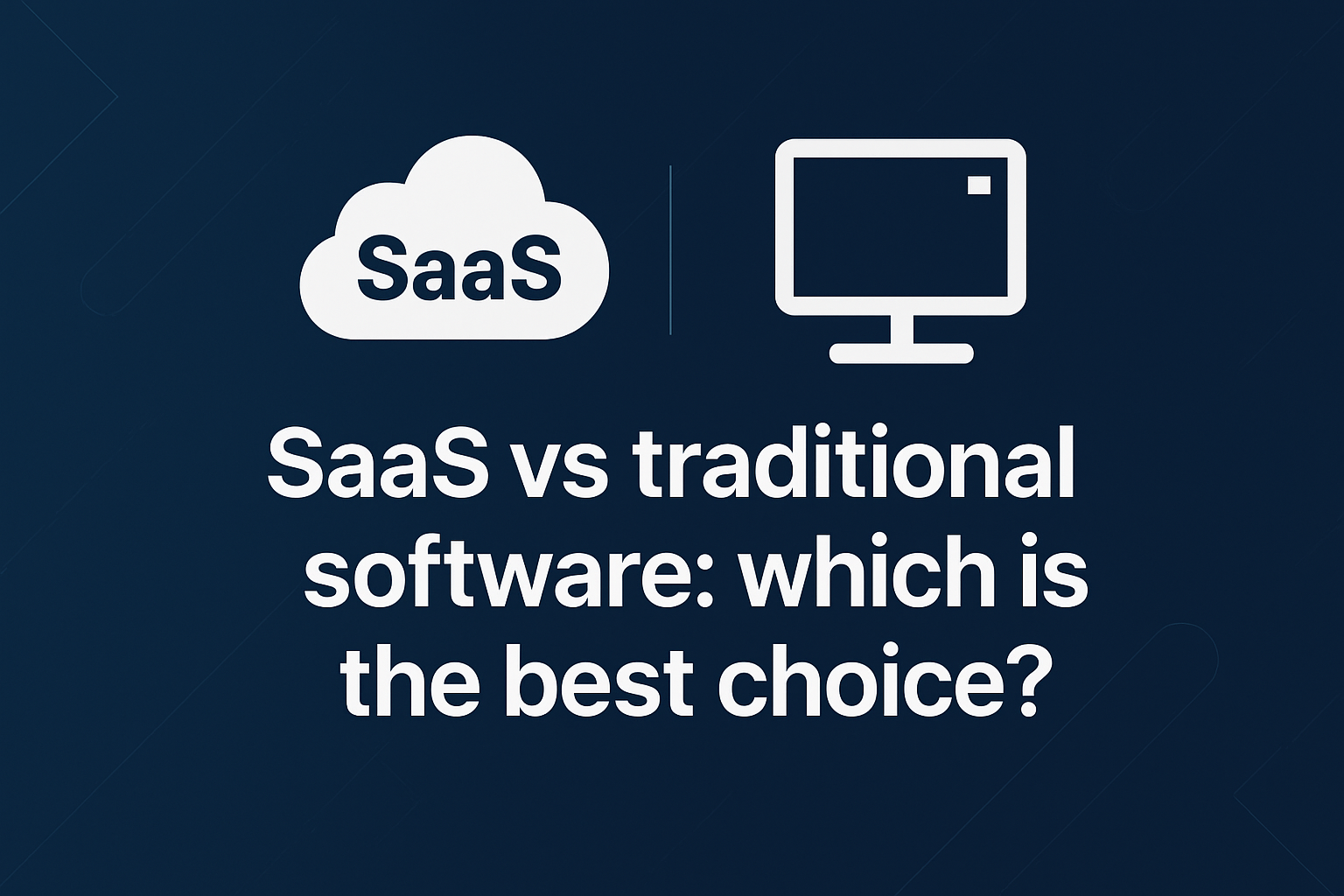
In 2025, entrepreneurs have an immense choice to manage their business: solutions SaaS (Software as a Service) On the one hand, and traditional software to be installed on the other.
But which of these two models is best suited to your business? To answer, let's compare their advantages, limitations, and the most relevant use cases.
One SaaS Is an application hosted in the cloud and accessible online via subscription.
Famous examples: Salesforce (CRM), HubSpot (marketing), Notion (organization), Shopify (e-commerce), Stripe (payment).
👉 Key advantage: no complex installations, automatic updates, and accessibility from anywhere.
One Traditional Software (or “on-premise”) is installed directly on a computer or an internal server.
Exemples: Microsoft Office (old license version), Sage, Photoshop CS6 off cloud.
👉 Key advantage: total control over the tool and data, but more technical management.
SaaS makes it possible to manage everything online, but one of the biggest challenges for entrepreneurs remains the Centralized Management.
👉 That's where it comes in Klark, the cockpit that:
With Klark, you benefit from the power of SaaS While maintaining a clear and centralized vision of your activity.
In 2025, SaaS is becoming the norm for freelancers and small businesses thanks to its flexibility, controlled costs and powerful integrations. Traditional tools remain useful in specific cases, but their use is increasingly limited.
👉 The future belongs to solutions cloud + smart cockpit like Klark, which really makes life easier for entrepreneurs.

SaaS is hosted online and accessible by subscription, traditional software is installed locally via license.

Not always: SaaS is more flexible, but traditional software may be preferable for specific needs (security, offline).

From €0 (free versions like HubSpot Free, Notion Free) to a few dozen euros per month depending on the tool and features.

Klark centralizes finance and administration, while offering exclusive discounts on over 400 SaaS.